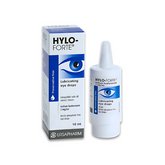Blue Light is bad for Sleep and Peak Performance
How Blue Light Affects Sleep, Mood, and Your Child’s Health
We’ve all heard about blue light, especially with how much time we spend on phones, tablets, and screens. But have you really stopped to think about how it affects your eyes, your sleep, or your child’s ability to focus?
Let’s break it down. Blue light is a high-energy light with a short wavelength. It’s not only from screens — it’s in sunlight and artificial indoor lighting too. But our biggest concern today is screen-based exposure, especially at night.
So What’s the Big Deal About Blue Light?

While blue light doesn’t damage the eyes in the short term, it plays havoc with sleep. Here’s why: it interferes with your circadian rhythm — your body’s natural clock — by suppressing melatonin, the sleep hormone. That late-night scroll through Instagram? It’s telling your brain it’s still daytime.

Without enough melatonin, falling asleep becomes a struggle. You toss, you turn, and the quality of your rest suffers. Over time, that sleep disruption starts to impact your mood, your focus, and your energy — especially for kids.
Why Kids Feel It Even More
If you’re a parent, you’ve likely noticed the post-screen crankiness or drop in focus. I’ve worked with families where blue light exposure late at night coincides with lower school performance, difficulty concentrating, and poor emotional regulation. It’s a domino effect — and sleep is the first piece to fall.

And it’s not just sleep. Research shows blue light exposure may impact how our body handles insulin, influencing metabolism and energy stability. So the effects go far beyond just tired eyes.
Why Professionals Are at Risk
Let’s talk about grown-ups for a moment — especially those of us working long hours behind a screen. Whether you’re in finance, law, tech, or running your own business, digital eye strain and sleep disruption are becoming silent productivity killers. And for many professionals I work with, the signs are easy to miss: mid-afternoon fatigue, lack of focus during meetings, irritability, and even headaches by day’s end.
These aren’t just “bad days.” Often, they’re the effects of chronic blue light exposure. Staring at your laptop, checking emails late into the night, or jumping from one Zoom call to another — it all adds up. And if you’re waking up groggy, despite a full night’s sleep, your circadian rhythm may have been hijacked by artificial light.
Digital Fatigue in the Workplace
Blue light exposure is also contributing to what’s now being coined as “digital fatigue.” Your brain works harder to process visual input under screen glare, especially when there’s no balance of natural light. This increases cognitive load, drains your energy, and reduces performance — especially in roles that require creative thinking, problem solving, or people management.
In high-pressure environments, sacrificing sleep for “one more task” is all too common. But productivity doesn’t come from doing more — it comes from doing better, more clearly, more rested. And for that, your eyes and brain need support.
What You Can Do in the Office
- Use blue light filters on all work devices (Ocushield makes medically-rated ones)
- Switch overhead lights to warmer tones or use desk lamps with dimmable settings
- Wear blue light-blocking glasses when working past sunset or under fluorescent lighting
- Build “focus sprints” into your schedule — 45 mins of work, 10 min digital detox
- Encourage team-wide awareness of digital wellbeing, not just ergonomics
These small upgrades can change how you show up — more alert, more focused, and more present both at work and at home.
Let’s Recap: Why This Matters
Whether you’re guiding a team, managing projects, or juggling meetings — your sleep, energy, and vision are essential assets. By reducing blue light exposure, you’re not just protecting your eyes — you’re investing in your daily clarity, long-term brain health, and leadership stamina.
How to Protect Your Eyes and Sleep
The good news? You don’t have to ban screens — just use them smartly. Here are a few simple steps:
- Use the 10:10 Rule: Every 10 minutes, take a 10-second break and look at something in the distance. (This is easier for many patients to follow than the traditional 20:20 rule.)
- Turn on blue light filters: Most devices have this built in — turn it on after sunset.
- Use blue light-blocking glasses: These can help reduce strain and protect your circadian rhythm.
- Power down at least one hour before bed: This is the biggest game-changer. Give your brain time to wind down without stimulation.
Final Thoughts
Blue light may be invisible, but its effects are not. From disrupted sleep to lowered focus and even metabolic stress, it’s something we can’t afford to ignore — especially for growing kids and hard-working adults.
By taking simple precautions, you can protect your family’s vision, your team’s productivity, and your own long-term wellbeing. A small shift in habits today can lead to better rest, better moods, and brighter mornings ahead.








